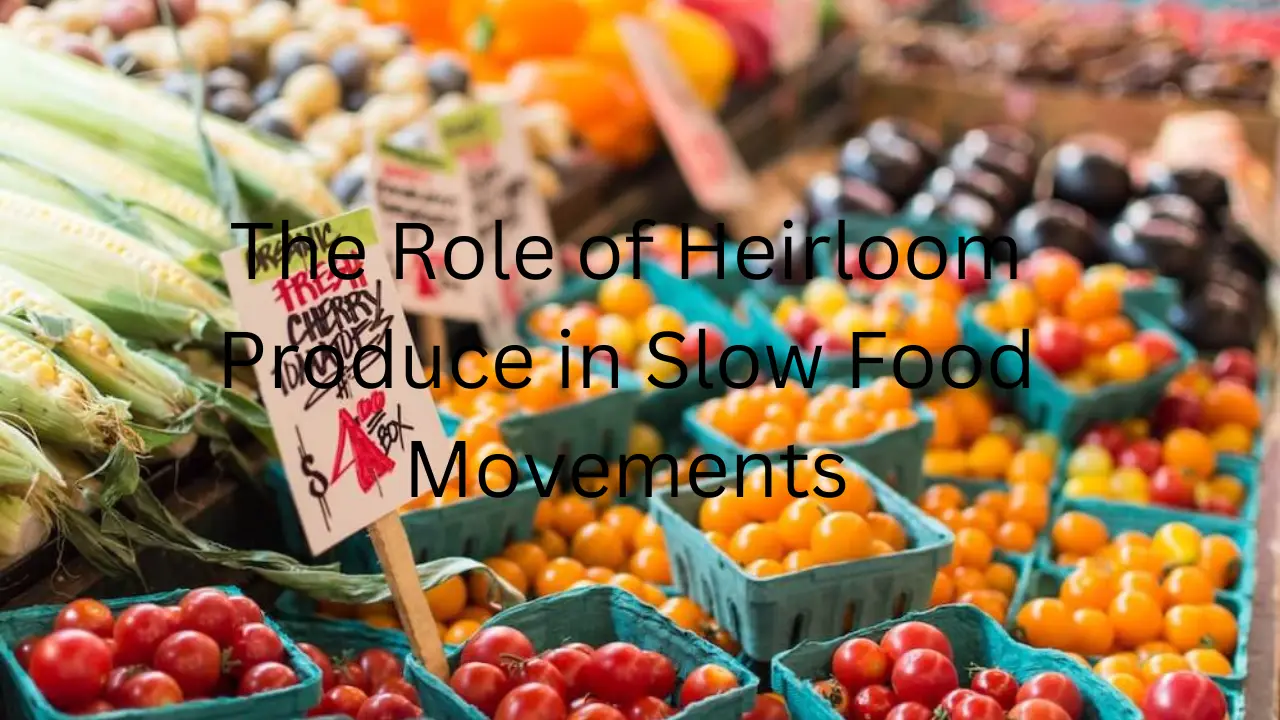
Utopia Home Clothes Hangers 50 Pack - Plastic Hangers Space Saving - Durable Coat Hanger with Shoulder Grooves (White)
7% OffThe Role of Heirloom Produce in Slow Food Movements
In today’s fast-paced world, where convenience often trumps quality, there is a growing movement that seeks to revive the tradition of savoring and preserving the flavors of the past. The Slow Food Movement, with its emphasis on local, sustainable, and culturally significant foods, has gained momentum worldwide. One essential component of this movement is heirloom produce. In this article, we will delve into the profound role that heirloom produce plays in the Slow Food Movement and explore why these ancient varieties are making a resurgence on our plates.
Understanding the Slow Food Movement
What is Slow Food?
The Slow Food Movement is a global initiative founded in Italy in 1986 by Carlo Petrini. Its primary goal is to counter the fast food culture that dominates modern societies by promoting local, traditional, and sustainably produced food. Slow Food encourages people to take the time to enjoy their meals, savor the flavors, and appreciate the cultural and historical significance of the ingredients.
Core Principles
At the heart of the Slow Food Movement are several core principles:
Localism
Supporting local farmers, markets, and food producers is essential. It helps reduce carbon footprints, fosters community connections, and ensures fresher, healthier food options.
Sustainability
Slow Food advocates for sustainable farming practices that protect the environment, conserve biodiversity, and promote ethical treatment of animals.
Biodiversity
Preserving the diversity of plant and animal species, including heirloom varieties, is a fundamental aspect of Slow Food’s mission.
Now, let’s explore how heirloom produce aligns perfectly with these principles and contributes significantly to the Slow Food Movement.
The Significance of Heirloom Produce
What are Heirloom Produce?
Heirloom produce refers to varieties of fruits, vegetables, and herbs that have been passed down through generations. These unique cultivars often have historical, cultural, and culinary value. Unlike modern hybrid varieties, heirlooms have not been altered through genetic modification.
Promoting Biodiversity
One of the central tenets of the Slow Food Movement is the preservation of biodiversity. Heirloom produce plays a crucial role in this regard. These ancient varieties come in a dazzling array of colors, shapes, and flavors, contributing to the rich tapestry of the food world. By cultivating heirlooms, we help prevent the loss of valuable genetic diversity that can be vital for future food security.
Connecting with Tradition
Heirloom produce connects us with our culinary heritage. When we enjoy an heirloom tomato or a heritage apple, we are tasting the same flavors that our ancestors did. This connection to tradition adds depth and meaning to our meals, making them more than just sustenance.
Supporting Local Farmers
Growing heirloom produce often requires more care and attention than mass-produced, uniform crops. This provides an opportunity for local farmers to thrive by growing and selling these unique varieties. Supporting heirloom producers is a way to bolster local economies and ensure the survival of these valuable crops.
Incorporating Heirloom Produce into Your Diet
A Culinary Adventure
Exploring heirloom produce is like embarking on a culinary adventure. These fruits and vegetables offer a wide range of flavors and textures that can elevate your dishes to new heights. From the sweet, earthy taste of a Cherokee Purple tomato to the vibrant, peppery notes of Bull’s Blood beets, heirlooms introduce a world of flavors waiting to be discovered.
Farm-to-Table Experience
To fully embrace the Slow Food ethos, consider sourcing your heirloom produce directly from local farmers or farmers’ markets. This not only guarantees freshness but also fosters a sense of community and supports the principles of the movement.
Conclusion
In a world where fast food and convenience often take precedence, the Slow Food Movement, with heirloom produce at its core, reminds us of the importance of savoring the past and preserving our culinary heritage. By choosing heirloom varieties and supporting local farmers, we can actively participate in this movement and savor the flavors of tradition.
FAQs
1. Are heirloom produce varieties more expensive than conventional ones?
Not necessarily. While some heirloom varieties may be pricier due to their uniqueness, others can be quite affordable, especially when sourced locally.
2. Can I grow heirloom produce in my own garden?
Absolutely! Many heirloom seeds are readily available, and growing them in your garden can be a rewarding experience.
3. Do heirloom vegetables taste better than modern hybrids?
Taste is subjective, but many people appreciate the rich and unique flavors of heirloom produce.
4. How can I find local farmers who grow heirloom produce?
Check farmers’ markets, join community-supported agriculture (CSA) programs, or simply ask around in your local community to discover heirloom producers.
5. Are heirloom produce varieties more nutritious than modern hybrids?
Heirloom produce is often praised for its nutritional density, as it has not been bred solely for appearance and transportability but for taste and nutrition as well. However, specific nutrient levels can vary between varieties.











